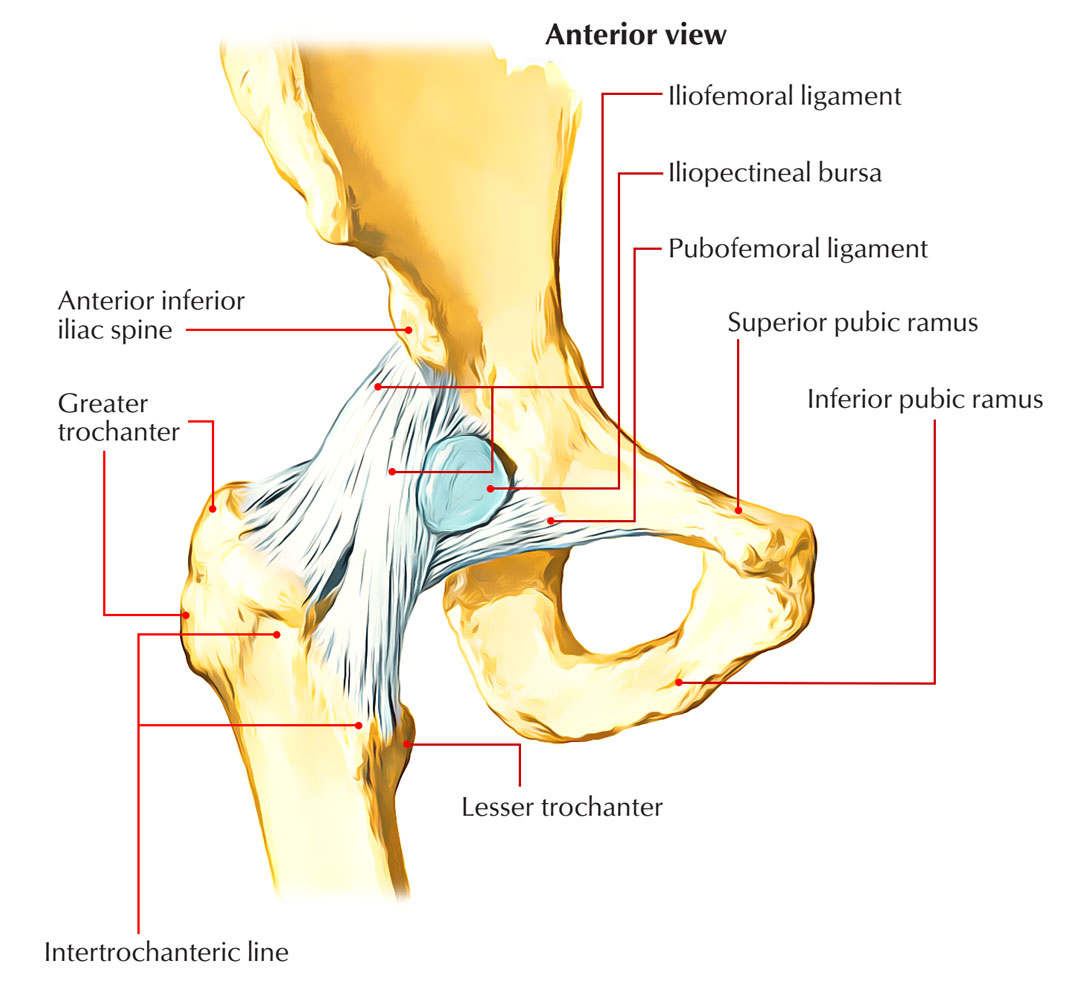The iliofemoral ligament lies on the anterior of the hip joint, twists inferiorly through the anterior inferior iliac spine of the pelvis to split within two sections that connect to the upper as well as lower parts of the intertrochanteric line, as viewed in. The iliofemoral ligament is in some cases referred to as the “Y” ligament due to the fact that its look looks like an upside down “Y”.

Iliofemoral Ligament
The iliofemoral ligament is among the greatest ligaments in the body as well as plays an essential function in standing posture. In erect position, the center of gravity normally enter backside the center of turning of the hip joint therefore has the tendency to elongate the joint.
Structure
The iliofemoral ligament is extremely strong as well as is formed like an upside down Y, being located anteriorly as well as thoroughly combined with the capsule. Its pinnacle is connected in between the anterior inferior iliac spine as well as acetabular margin, its root to the intertrochanteric line. It is compostured of a medially positioned, thicker coming down part as well as a laterally positioned, transverse part, which is generally appreciable anteriorly. The obliquely disposed transverse part is connected to a tubercle at the superolateral side of the intertrochanteric line, meantime the vertically aligned coming down part gets to the inferomedial end of the line.
Parts
Greater iliofemoral ligament, lateral iliofemoral ligament, and medial iliofemoral ligament
Group
Lower limb joints – Hip
Functions
Iliofemoral ligament limits the movement of joints in the pelvic region due to the fact that this ligament ends up being tight with hip elongation. A ligament is a kind of connective tissue that applies a static, elastic force whenever extended by particular movements; this force guarantees that joints are restricted to a specific series of motion, like a somewhat elastic tether. This avoids overextension, which might trigger injury to the joint.
Elongation & Flexion
- Elongation takes place when points of connection in a joint are pulled more apart, making the joint angle boost. Flexion explains the opposite motion, which takes place when the joint bends and the angle reduces. Ligaments can manage these movements, along with others such as rotation.
- Hip elongation is restricted by the iliofemoral ligament, which enter over the front of the hip joint and links the ilium (hip bone) to the femur (thigh bone).
- This ligament lengthens when the pelvis is slanted in reverse, limiting the range the joint can be elongated. The iliofemoral ligament also restricts external (outside) rotation of the hip joint when bent, and it limits both internal (inward) and external rotation when the joint is elongated.
Other functionalities of Iliofemoral ligament
The iliofemoral ligament also works as a powerful restriction for any activity. Many anatomy texts keep that the iliofemoral ligament limitations hip hyperextension to 10 ° to 20 ° in the typical specific; however numerous dancers obviously considerably extend this ligament and the capsule in order to get a variety of hyperextension as great as 40 °. The lateral fibers of the iliofemoral ligament also restrict hip external rotation as well as hip adduction. Because of this restraint to external rotation, some dancers embrace the undesirable method of anteriorly tilting the pelvis whenever aiming to accomplish higher turnout at the hip.

 (60 votes, average: 4.52 out of 5)
(60 votes, average: 4.52 out of 5)